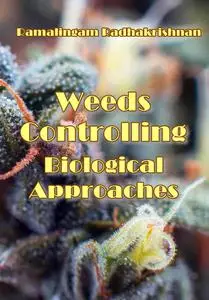"Weeds Controlling Biological Approaches" ed. by Ramalingam Radhakrishnan
ITExLi | 2018 | ISBN: 178923655X 9781789236552 1789236541 9781789236545 1838815899 9781838815899 | 89 pages | PDF | 6 MB
ITExLi | 2018 | ISBN: 178923655X 9781789236552 1789236541 9781789236545 1838815899 9781838815899 | 89 pages | PDF | 6 MB
The aim of this book is to discuss the current understanding of bioherbicides and strategies to weed control.
Weed populations in agriculture are a major cause of yield loss. Conventionally, crop rotation and tillage practices limit the number of weed flora. Several chemical herbicides are being applied to control weed growth, but the long-term use of those chemicals does not effectively control weeds, due to the development of resistant germplasms, which cause hazardous effects in living organisms. The global interest in organic farming endorses the alternative way of weed control against chemical herbicides. Recently, biological agents have been added to integrated weed management strategies. Several studies reveal that plant extracts, bacteria, fungi and their products effectively control weed seed germination and growth.
Contents
1. Need of Bioherbicide for Weed Control
2. Overview of Biological Methods of Weed Control
3. The Effect of Tillage on the Weed Control: An Adaptive Approach
4. Genetic Variation for Weed Competition and Allelopathy in Rapeseed (Brassica napus L.)
5. Potentially Phytotoxic of Chemical Compounds Present in Essential Oil for Invasive Plants Control: A Mini-Review
6. Production and Stabilization of Mycoherbicides
1st true PDF with TOC BookMarkLinks
More : You find here



